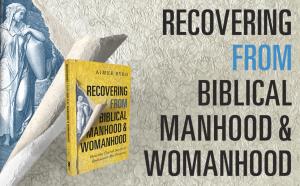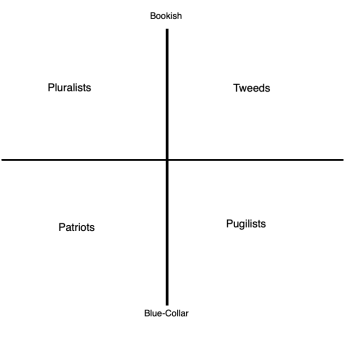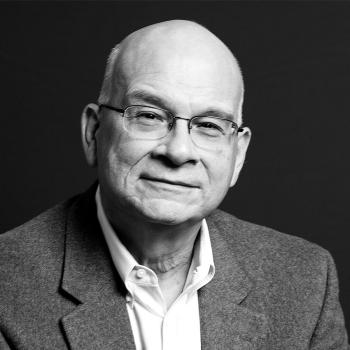
A few months ago, Reformed writer Aimee Byrd kicked up a minor firestorm in the confessional Presbyterian corner of the internet with her most recent book—the provocatively titled Recovering from Biblical Manhood and Womanhood.
In context, it’s hard to imagine a clearer shot across the bow. No discussion of evangelical theology of gender can ignore the 800-pound gorilla in the room, the Council on Biblical Manhood and Womanhood, and its foundational text Recovering Biblical Manhood and Womanhood. New Calvinist leading lights like John Piper and Wayne Grudem have dominated such conversations for years, preaching a rigorous version of “complementarianism” in which women are called to accept roles as complementary adjuncts to male leaders. (If it sounds like I’m being a bit polemical myself, I am; for reasons that will become clear, I’m no fan of the CBMW approach to gender relations.)
As one might expect, Recovering from Biblical Manhood and Womanhood was immediately contentious. First came Byrd’s removal from a podcast and parachurch organization, following her refusal to answer a series of follow-up questions leveled by other Reformed writers. Next came the disclosure of a private Facebook group where Byrd and her arguments were frequently mocked by Calvinist men. The fallout from all this is still unfolding, which frankly makes me hesitant to engage with a controversy that (given that I’m a Lutheran) may not really be any of my business.
Nevertheless, I picked up Byrd’s book on a long car trip recently—curious to see what all the fuss was about—and had a few thoughts of my own that, based on my reading, haven’t really shown up elsewhere in the discourse. To that end, I won’t rehash specifically exegetical arguments here—there’s plenty of fruitful back-and-forth already out there for those who care to investigate.
It seems to me that Recovering from Biblical Manhood and Womanhood is not a particularly well-structured book (that’s no indictment of the quality of Byrd’s prose per se, though.) In part, this lack of structure is attributable to the ambiguity of Byrd’s thesis, which has led several commentators to read this book through the lens of their prior views on Byrd’s work. Some see her as laying the groundwork for a full-scale defense of women’s ordination, while others take her goals to be far more modest. Speaking for myself, I think the most honest and charitable characterization of Byrd’s argument looks something like this: churches with reductive views of gender roles, such as those taught by CBMW, should instead align themselves with Scripture and tradition and acknowledge that women are essential voices in the community of discipleship that is the institutional church.
However, a key factor that complicates any attempt to assess this book is the fact that Byrd builds her case by drawing on two separate streams of Christian thought that proceed from radically divergent theological and metaphysical premises.
First, there is what we might call the “feminist/egalitarian” stream of thought. Early on, Byrd discusses the Old Testament stories of Ruth, Rahab, and Deborah, describing them as “gynocentric interruptions” in an otherwise highly masculinized text—moments where women’s voices and perspectives are allowed to come to the fore. That’s certainly true, but I can’t help noting that the scholars who tend to talk of “gynocentric interruptions” employ a set of hermeneutical principles that are radically alien to the Orthodox Presbyterian Church tradition in which Byrd locates herself.
Many of the feminist methods that Byrd flirts with assume, as methodological priors, that the text exists as a human artifact consciously crafted to legitimate and perpetuate patriarchal authority—meaning that “gynocentric interruptions” are instances where the human author’s project goes amiss, allowing a woman’s perspective to momentarily break through. But a traditional hermeneutic—with an a priori commitment to the unity and cohesiveness of Scripture as inspired, inerrant, infallible, or what have you—does not share the premises of such criticism. On the older view, there is no superstructure of male power that requires disruption; the text is as it is because it is ultimately a product of the Spirit, as mediated by human authors. Accordingly, to speak of “interruption” in this context is to imply that the Spirit—or, if you prefer, the inspired human writers—were illegitimately anthrocentric, or male-fixated, in their writing of the text. One can certainly argue for that claim, but I assume Byrd would reject it outright: else, the entire confessional doctrine of Scripture is called into question.
It’s possible Byrd is reading the scholars she cites “against themselves,” so to speak—pressing them into service of a biblical-theological project whose methodological commitments they would reject. Fair enough. But if that’s Byrd’s move, it’s never clearly articulated as such—which has left several other reviewers wondering why she relies so extensively on scholars outside her own tradition (and, indeed, opposed to key elements of that tradition). More clarity on this methodological point, I think, would have helped prevent some of the online blowback.
In any event, the second stream of thought on which Byrd draws could hardly be more different. Whereas feminist and egalitarian scholars are often keen to excise notions of “gender essentialism” from the Christian tradition, Roman Catholicism takes that essentialism as the bedrock of its theology of gender—and it is the Catholic framework for reasoning about gender, in particular the work of Pope John Paul II, that Byrd invokes against CBMW’s approach.
As Byrd frames the issue, CBMW’s conclusions are, all too often, rooted in a view of gender that implicitly treats “biblical femininity” and “biblical masculinity” as a series of acts one performs. Submission, leadership, and so forth are all functions one does, rather that descriptors of what one is. For example, consider how John Piper defines “masculinity” and “femininity” early on in Recovering Biblical Manhood and Womanhood:
At the heart of mature masculinity is a sense of benevolent responsibility to lead, provide for, and protect women in ways appropriate to a man’s differing relationships.
At the heart of mature femininity is a freeing disposition to affirm, receive and nurture strength and leadership from worthy men in ways appropriate to a woman’s differing relationships.
Note that these definitions are substantially unmoored from any connection to biological sex as such. They describe simply patterns of interaction, in which the behavioral categories of “masculine” and “feminine” stand essentially apart from any underlying physical realities. To grasp the problem here, merely consider that the distinctly female capacity to gestate and nurture new life, even when coupled with the fact that the average female individual possesses less physical strength than the average male individual, does not logically entail a behavioral posture of strict deference in the face of male power. But as Piper frames the matter, a biologically male human being becomes masculine in exercising command-and-control authority; a biologically female human being becomes feminine in submitting to that authority. On this model, “masculine” and “feminine” are defined by reference to specific actions and behaviors (which sociologists would call “performances”), not by reference to the principles of the created order as such.
This “performative” understanding of masculinity and femininity is, at bottom, a version of the view held by Judith Butler, author of Gender Trouble: Feminism and the Subversion of Identity and the intellectual godmother of today’s notions of gender fluidity and instability. For Butler, “gender reality is created through sustained social performances,” as filtered through the grid of one’s dominant culture. The biologically sexed body, for Butler, has nothing whatsoever to do with it. Butler’s approach is echoed more recently in the work of Andrea Long Chu, a trans woman for whom “woman-ness” is defined as a kind of submissive otherization relative to the male.
I am certain that Piper, given his concern over the proper human response to God’s created order, would reject this understanding of gender. But—almost certainly unconsciously—by inscribing the view that “performative” categories of masculinity and femininity are central to Christian ethical thought, while simultaneously failing to establish a link between the prescribed “performances” and classical theological anthropology, Piper ultimately plays into Butler’s hands. Placing the accent on culturally constructed markers of maleness and femaleness, rather than on the underlying metaphysical issues (which implicate questions of natural law), paves the way for a wholesale rejection of traditional theological claims about creation—once those cultural constructions are, inevitably, exposed as historically contingent.
For her part, Byrd (consistent with the broader tradition of Christian thought) rejects such an anti-metaphysical understanding of masculinity and femininity, giving rise to what may be her single most scorching and incisive observation.
My sexuality is not a role I play. I don’t need to act like a woman; I actually am a woman. Furthermore, role playing is neither our identity nor our eternal aim.
Essentialist? Of course, but that’s just traditional Catholic theology (and it finds support in the anthropology of classical Christianity more broadly). A recent example proves instructive: Thomas Crean and Alan Fimister’s recent Integralism: A Manual of Political Philosophy is decidedly not a progressive text (the book calls for the resurrection of a medieval-style Catholic polity), but its vision of gender relations is still much more liberating than Piper’s: “Since [a man’s] wife is a rational being, he ought . . . to recognise her right to accomplish her domestic tasks in the manner she judges best.” In some domains, Crean and Fimister remind their readers, Father doesn’t necessarily know best; the essence of sex difference is not, and has never been, submission as such.
If I am right about the argument I’ve outlined here (in skeletal form), it seems to me that CBMW’s early work might be described in hindsight as throwing water on a grease fire. CBMW exists to ostensibly offer an alternative to revisionist understandings of sex and gender, yet its founding texts inescapably point in that same theoretical direction. There is, at the very least, a painful irony in this.
If Byrd had taken this one extra step—connecting Piper’s implicit concept of gender performance to Butler and her philosophical heirs—I have to think her book would’ve been far better received. Such a claim offers a serious philosophical challenge to some of CBMW’s weakest arguments, and it cannot be written off as merely modernist influence. Perhaps the real problem with CBMW, in the end, is its deracinated view of natural law.
This isn’t the only place where a powerful, compelling argument is at the tip of Byrd’s tongue (so to speak) but goes unsaid. In particular, Byrd’s book is at its very best when it turns to a topic that virtually none of her recent interlocutors have commented on—the problem of “parachurch ministries” as theological substitutes for the local church, particularly where women are concerned. In so doing, Byrd echoes (possibly unconsciously) a powerful 2017 article in Christianity Today by Tish Harrison Warren, which bluntly stated that bloggers “need overt institutional superintendence (to match a huge national stage) and ecclesial accountability that has heft and power. Otherwise, they can teach any doctrine on earth under the banner of Christian faith and orthodoxy.”
This is an excellent point, and in elucidating it, Byrd sets herself up to make a devastating argument against the fruits of the CBMW approach to gender: pushing women out of the spaces where “serious” theological work is being done has led to a proliferation of grifters and heretics more interested in tapping into the “Christian women’s market” than testifying to the truth. Yet this point, frustratingly, never comes fully into view. Elsewhere, Byrd wisely discusses the example of St. Macrina, sister of the eminent “Cappadocian Fathers” Basil of Caesarea and Gregory of Nyssa, but unfortunately doesn’t connect the dots to form a clear picture: does anyone seriously think that Macrina would’ve spent her time on Jesus Calling or The Shack? Of course not—so why, all too often, are these sorts of books the chief products marketed to women? Shouldn’t the church have a higher respect for its daughters than that?
When all’s said and done, though, I’m not sure Recovering from Biblical Manhood and Womanhood will move the theological needle in any significant way. For many, the sticking point will likely be Byrd’s effort to assimilate into her argument a number of authorities beginning from incommensurable starting places (one essentialist, the other decidedly anti-essentialist). The fact that this tension simply goes unaddressed leaves one thinking that Byrd is primarily interested in finding ammunition to use against CBMW—an organization for which I have no particular love, but one that warrants a more thorough rebuttal than Byrd’s book provides.
Nevertheless, Byrd’s volume successfully demonstrates that the necessary material for such a rebuttal is readily at hand. The vineyard is ready and waiting for laborers.












